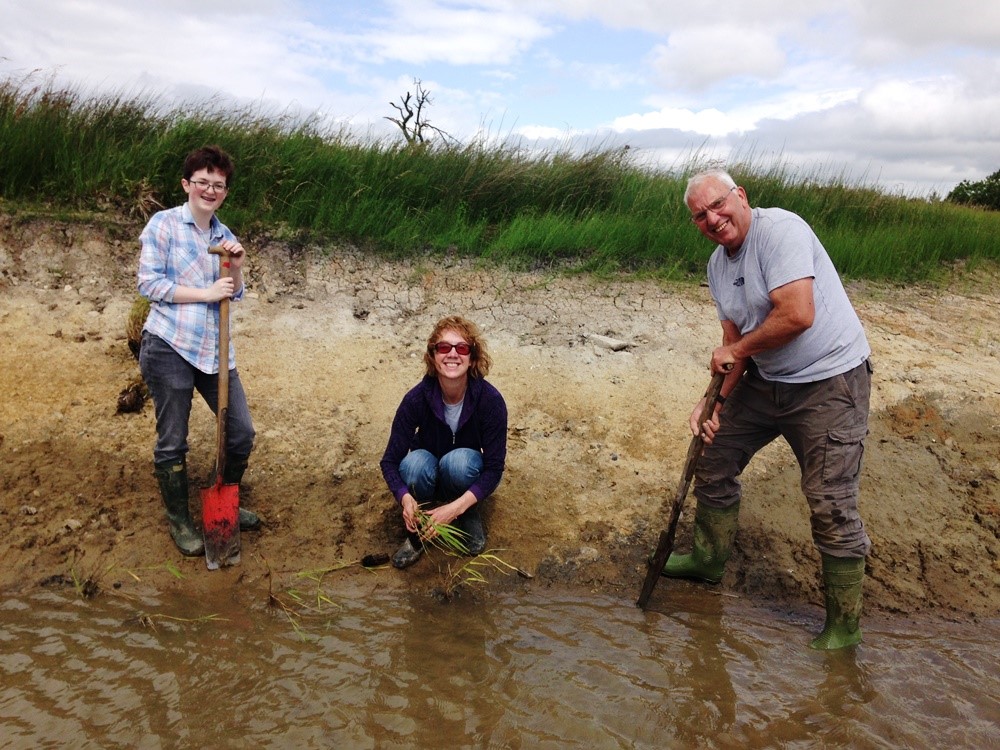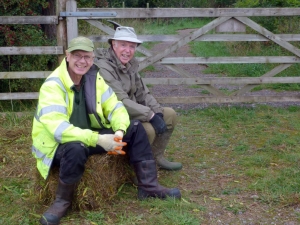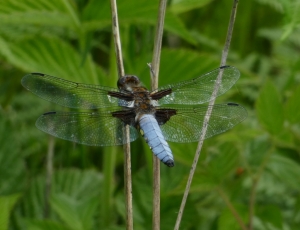Blog Archive (25) Posts Made in May 2014
A Special Eco Club
Saturday, May 31st 2014
The weather has not been very good during the last week, cold and wet but today was dry, and not too cold. Birds were the topic for Eco Club. Tony explained to the children why birds are ringed in the nest boxes and how the weather can cause problems for the adults trying to feed their chicks.
Initially we 'lost' the first nest box we were going to check but Jenny found it. It was not an easy place to get to, but children and adults managed.
The box was opened and the tiny chicks taken out carefully and placed into a bag. The nest was made up of moss and lined with Roe Deer hair. Grace scribed, recording the ring number and who ringed the bird. After receiving their rings the chicks were placed back into their nest.
As we headed to the next nest box we stopped to watch a wasp on a bridge rail, collecting wood for its nest.
Our next box was in the non-intervention area. This part of the reserve is not touched at all. Tony checked the chicks and found that they were still too small to have their rings fitted. He explained that as the weather had been wet and cool the adults will have had problems finding enough food and so the chicks had not grown as expected.
Bluebells are growing all over the reserve, in places we have not seen them before. Some are now setting seed, but in the non intervention area they are still in full flower.
After refreshments we set off to look at some Kestrel chicks, with help from John. He collected 5 chicks from the nest box and Liz and Sue ringed them. The children saw the different size of ring used. They also felt the weight of a chick in the bag as it waited to be returned to the nest. John explained that the chicks were different ages and that sometimes, if food was short, the youngest ones did not survive.
Once all five chicks were ringed John returned them to the nest. The chicks looked well fed. John showed the children a dead Bank Vole that had been left in the nest by the parents.
Everyone thoroughly enjoyed seeing the chicks and watching them being ringed. A huge thank you to Tony, John, Liz and Sue who spent time with us at a very busy time of year for the bird ringers. Thank you also to everyone who helped finding boxes, making drinks and tidying up.
Nestbox News
Friday, May 30th 2014
After a frantic month racing around the nestboxes in Foxglove and across the wider training area we have almost made it to the end! Only five boxes still have unringed chicks on the reserve; these will be visited over the weekend for Eco Club tomorrow and then the Nestbox Walk on Sunday morning.
There are several broods of Kestrels to return to and ring over the weekend. Once these and the remaining small boxes are re-visited the ringers will have a bit of breathing space, but then there are always the CES sessions and plenty of wader chicks around to keep them all out of mischief!
Thank you to all the ringing team and all the other supporters for your hard work over the past few weeks. More details of exactly what has been achieved will be posted once all the data is collated.
Back to Water Droplets
Thursday, May 29th 2014
It was dry today - well it was not raining! The pools at the head of the lake were full and water was rushing over the dams.
Risedale Beck was full too but it looked as though the flood water was already running off. Work carried out earlier in the year to prevent erosion on this bend is working.
All the vegetation had accompanying water droplets. Horsetails are growing in the Scrapes - they had water droplets.
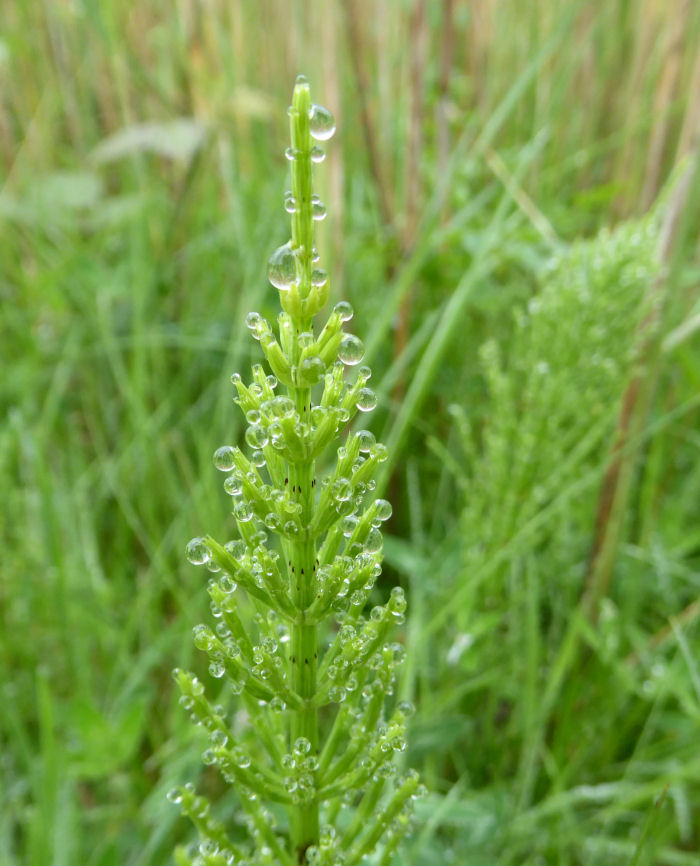
Seed heads of Water Aven had water droplets!
Cock's Foot Grass had water droplets too.
However the damp conditions did not deter members of Hudswell Gardening Group enjoying their guided walk around the reserve. They explored the Scrapes, the moorland and Risedale Beck. Many flowers were seen including Pignut, Mouse-ear Hawkweed, Marsh Marigold and Wild Strawberry. A talking point was the amount of flowers on the self seeded Holly shrubs as we left the moorland.
Throughout the walk we saw Bluebells growing in many areas where they have not grown before. Have they liked the mild winter, the warm spring or the large amount of water over winter - if only they could tell us.
Moth-ing and Flowering!
Wednesday, May 28th 2014
If you had walked into the Field Centre this morning you would have heard the following conversations. “It has buds above the flower, try page256, no that is not it, it has purple bits, wrong time of year, what about the spots?” Rustling of pages, silence, then “It is Wild Turnip, no it is a carpet, can't be it doesn't have the right markings, tendrils are wrong.” No doubt you would have wondered what was going on, well you needn't have worried as it was moth morning and end of month flower walk morning. Identifcation of various species of moths and flowers was taking place and everyone was being helpful! It was a little confusing at times!
The weather was not particularly favourable for moths overnight but we did trap 19 moths of 14 species including Brown Silverline, Pale Prominent and Purple Thorn, shown below.
By this time of year the flower walk usually takes in most habitats on the reserve. Today, with wellies, waterproofs and over trousers only specific flowers were visited. As you walk through the Scrapes, on your left, in the willow carr, there is a bright yellow flower. We had worries that it was Oil Seed Rape and we were ready to do a little weed control. However Christine ID'd it as Wild Turnip and asked us to check, which we did this morning. Although the flower was looking a little sorry for itself in all the rain, we confirmed her ID. As they say, this is one I photographed earlier!
We were also looking at the European Larch cones. They have grown considerably and debate took place as to the age of these cones. Upon investigation they are from the red flowers seen earlier in the year. They take between five to eight months to produce seeds and ripen. The old cones can then remain on the tree for some time.
Part of our walk took us across the moor and this photograph shows the delightful conditions.
We passed the gen guards around the Yellow Rattle plants and were really pleased that we could see some of them in flower. Also on the middle moor we recorded Lousewort, Meadow Buttercup and Pignut.
The weather conditions were not conducive to staying outside for long, but it was nice to know that we were not the only ones that did not appreciate the weather. Tadpoles, after days of swimming all over the ponds, were huddled together - to keep warm?
Thank you to everyone who helped with identification today, without your contribution our species data would not be complete.
Cutting Back
Tuesday, May 27th 2014
With the warm and wet conditions lately plants have put on a tremendous amount of growth in a very short time. Laden with water this morning many branches were hanging low along the track and red route. Volunteers, armed with secateurs and loppers, soon cut back these branches improving access along these routes again.
The amount of cuttings soon mounted up and will be moved to the bullet catcher to be burnt later this week.
After lunch volunteers started work in the scrapes to clear invasive Silver Birch and Willow. There is still more to do here at a later date but the area is much improved already. As the weather warmed up this afternoon John also completed his butterfly survey; large numbers of Green Veined White, Orange Tips and Speckled Wood were seen, as well as a possible sighting of a fritillary, although some checking through books is needed before we can confirm this!
Thank you all for your hard work today!
Special Birds
Monday, May 26th 2014
At this time of year the bird ringing volunteers are very busy, out during the day and often for many hours in the evenings. Nest boxes both in Foxglove and on the training area are checked. If the chicks are old enough they are ringed, if not the box must be revisited. Travelling from one area to another, any wader chicks that are spotted are ringed, 100 so far. The total number of Tawny Owl chicks ringed is 49, one of the best seasons for many years.
The ringers are also involved in ringing very special birds, Peregrines and Ring Ouzels.
Peregrines do not nest in convenient places and climbers assist with collecting the chicks from the nest and lowering them down for the ringers. Whilst the chicks are ringed the climbers hang around!
Once ringed the chicks are very carefully pulled back up and returned to the nest.
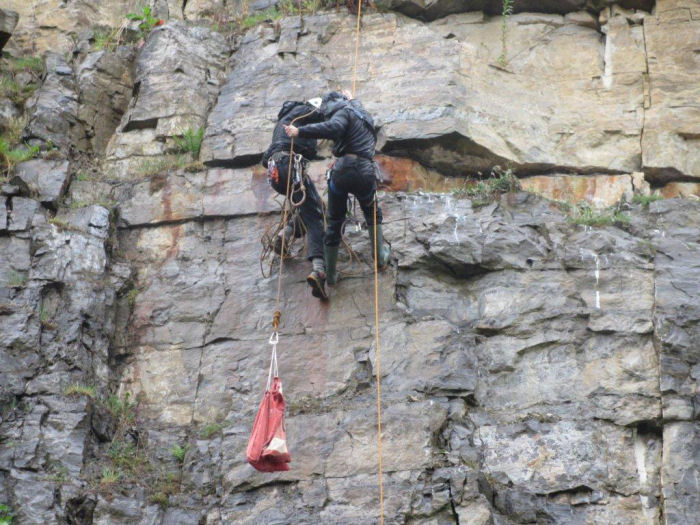

Three chicks were ringed and one addled egg remained. All were in good condition and well fed. Hopefully all will fledge. Here Sandra rings one of the young females.

Ring Ouzels prefer the ground on which to make their nest. These will not be long before they fledge.
CES 3 today was quiet as many birds are still guarding territories and sitting on eggs and young. However it was good to see our first fledglings, Song Thrush, Dunnock and Robin. These birds nest early and so have missed the heavy rain, which may well cause problems for ground nesting birds.
The Far Moor
Sunday, May 25th 2014
When the moorland was added to Foxglove it was very rough pasture. Over the years it has been managed and the rewards can now be seen.
Over the winter the area opposite the Bluebell bank was cleared of old Gorse. Now Bluebells are growing.
Cattle and sheep have grazed the moor and although they do enjoy the new growth of grass they also eat some of the coarser grasses and reeds that we want to reduce.
Lousewort was seen for the first time on the far moor.
A regular flower is Mouse-ear Hawkweed. This dandelion-like flower can be identified by the red tips to the underside of its petals.
The fen continues to surprise us. Bogbean leaves have grown there, but rarely a flower. Last year there were one or two, this year many more.
Common Butterwort is an insectivorous plant, growing on nutrient poor soil. Insects get caught on its sticky leaves, which then slowly wrap around the insect. Enzymes digest it and the nutrients can then be absorbed by the plant. There are more flowers this year.
Bird Song Breakfast
Saturday, May 24th 2014
Last year this event was cancelled due to heavy rain and a close eye was kept on the forecast for today as the weather was unsettled. However although misty, the wind had dropped and it was not as cold as previous days. Forty people arrived for 0430. Some had been on many Birdsong Breakfasts, some arrived for the first time.
Tony explained that over the many years this event had been held, only once had there been a lovely warm, sunny morning; most had seen a variety of cold, wet, damp, foggy, windy conditions generally not good for birdsong!
Tony, Seb, Adam and Sophie lead groups in different directions around the reserve.
One group visited the Scrapes and walked along the back of the ponds where the Sedge Warbler could be heard.
Garden Warbler and Blackcap were heard in the sedge area at the lower end of the Scrapes.
Two groups crossed near the Hague Bridge and compared notes.
Adam and Sophie's group said it was a 'recording' of a Cuckoo that the other group reported!
By the end of the walks Mistle and Song Thrush, Grey Heron, Jay and Great Spotteed Woodpecker had all been added to the list - around 30 different species had been heard..
A convoy of cars set off to the Black Grouse lek on the training area. The mist was still hanging around as everyone walked up a more gentle hill than in the past.
Binoculars and telescopes came out to look for the Black Grouse.
Unfortunately they were not at the lek. One was seen flying as we arrived at the first barrier.
Curlew were seen and heard. Some Greylag Geese flew over and Meadow Pipits and Skylarks hovered around the group. The convoy formed up again and headed to Wathgill where breakfast was waiting.
Everyone enjoyed their walks and listening to the birds. Breakfast was very much appreciated by everyone. Thanks to the chefs, James and Robyns, and the staff for looking after us so well. Many thanks also to the leaders who lead us around the reserve and identified the calls for us. Same time next year? Lets go for a lovely warm sunny day - it is a nice idea!
Bird Ringing Update
Friday, May 23rd 2014
The bird ringers have been very busy over the last few weeks trying to check all of the nest boxes located on the training area. Several of the woods have now been visited, with more to go to over the coming days. High Spring Wood was carpeted with Bluebells and Early Purple Orchids, and looked fabulous in the evening sun.
Pied Flycatcher nests were found here, all with the adults still sitting on eggs.
Lesley was lucky enough to find a Nuthatch nesting. Nuthatch nests are easily recognisable as you approach the box; the adults seal around the opening with mud and clay reducing the size of the entrance hole. The nest itself is then lined loosely with dry leaves.
Many of the large boxes have been checked. Forty nine Tawny Owls have been processed with one box left to return to. At least 40 Kestrel eggs have been found and looking back over results from recent years this could be the best breeding season for Kestrels for some time. The third species found in our large boxes is Jackdaws, and the last of these chicks was ringed earlier this week.
Redstarts did not have a particularly good season last year with very few nests found. This year looks like it could be more promising with one brood of chicks already ringed and more nests found to re-visit at a later date.
Thank you to all the bird ringers for the long hours and hard work put in, especially at this time of year!
Moth Trapping
Wednesday, May 21st 2014
As usual our moth trap was set yesterday evening; 37 individual moths of 17 different species were trapped along with several ichneumon wasps, beetles and flies.
Scalloped Hazel moths have one flight generation per year from May-June. Caterpillars can be found feeding later in the year on Hazel, Silver Birch, Blackthorn and Hawthorn, all of which are common plants on the reserve. These moths can be distinguished by their irregularly scalloped forewing edges. There is much variation in the darkness of this species though all have a central ring shaped spot on the forewing.
Elephant Hawkmoths are regular visitors to the trap over the summer months and are unmistakable with boldly coloured pink and olive colourings. They fly early after dusk and feed mainly on Honeysuckle and other plants with tubular flowers.
White Ermine are seen from May to late July. This example is a male, distinguishable from the female by the cream colour of its wings. Females have brilliant white wings punctuated with black dots. The number of spots can vary considerably sometimes joining to form black streaks on the wing (and identification problems for amateur moth trappers!)
Thank you to all the volunteers who helped to identify all the moths and to all those who have helped out on various other tasks here today.
Team Tuesday
Tuesday, May 20th 2014
The Foxglove volunteers were out in force again helping with a variety of tasks around the reserve. First order of the day was completing the fencing on the wildflower meadow to protect the new Yellow Rattle plug plants from livestock when they arrive early next week.
With all the recent rain and warm weather the need to strim along paths to keep them open is almost constant. Ken and Eddie do a fantastic job for us working on these each week.
Volunteers also worked hard in the gardens around the Field Centre, clearing young Silver Birch saplings from outside the kitchen window and giving the lawns a much needed cut.
Work was also done on the rockery in the back garden. Now the majority of the weeds have been removed the plan is to plant this area with nectar rich species such as Heather and Lavender to provide an additional food source for the many insects found on the reserve.
All of these jobs are really important and help to keep the reserve running smoothly; thank you everyone for your help!
Richmond Methodist School Visits
Monday, May 19th 2014
Richmond Methodist Primary School came to Foxglove today for the last of their three junior school visits to the reserve. The children were able to enjoy the glorious sunshine and were pleased to be able to play in the dams at the outdoor classroom to cool off - some managed to stay relatively dry!
Many different types of minibeasts were found under the logs including the first centipede found on a school visit this year! In the ponds leeches were spotted and caused a stir as they tried to climb out of the sinks!
In other news the ringers have been very busy checking the many nest boxes on the reserve and the wider training area. To date 49 Tawny Owls have been ringed, 8 Dipper chicks and 1 adult (below) as well as 2 adult Kestrels, with many more chicks than last year to go back to. They are starting the small nest boxes this week hoping for good numbers of Pied Flycatchers and Redstarts.
Richmond Methodist Primary School Visit
Friday, May 16th 2014
Children from Richmond Methodist Primary School visited the reserve today to learn about the different habitats found here, and the animals and plants living in these. They spent their day on a minibeast safari, pond dipping and on a nature walk along Risedale Beck.
As the children walked in past the pond dipping platform a Sedge Warbler could be heard singing from its usual perch in the Hawthorn by the reed bed.
Large Red Damselflies were seen basking in the sun on wooden handrails and the stone paths.
We hope you all enjoyed your visit to Foxglove today!
Swarming Bees!
Wednesday, May 14th 2014
The honey bees from the observation hide in the Field Centre swarmed this morning as Richmond C of E Primary School were visiting the reserve! This made very interesting viewing for the young children as the beekeepers captured the swarm. Swarming is the natural means of reproduction of honey bee colonies, where about 60% of the worker bees leave the original hive location with the old queen.
The bees have been very active over the past ten days, with numbers multiplying rapidly. Swarming is mainly a spring phenomenon, most commonly happening on a warm sunny day. Below you can see the swarm massing on the landing pad on the wall of the FIeld Centre.
They flew only a short distance to rest on a branch in the garden. From here scouts are sent out flying up to 1km to find suitable locations for a new colony to nest.
The beekeepers quickly came in to capture the swarm. The branch on which the swarm was resting was cut and the the whole swarm simply dropped into a skepp.
This will provide a temporary home for the new colony until a hive can be set up for them.
We must say thank you to our beekeepers who quickly came in to capture the swarm, and show the children (from a distance) what they were doing. Thanks also to Linda for all of the fantastic pictures she took.
Out on the Moor
Tuesday, May 13th 2014
Each summer sheep and cattle are used on the moorland to help us manage the coarse grasses and rushes. With the warm wet weather the grass is growing fast; we are hoping the livestock will be with us by the end of next week.
Earlier in April, 450 Yellow Rattle plug plants were planted out in three sections on the moorland wildflower meadow. To give these the best chance of becoming established in the sward, volunteers have spent the day building fences to protect these from being grazed off by the livestock.
The Yellow Rattle plants have come on well since they were planted. They will grow to about 25-50cm and flower through the summer months. The fruit is a dry capsule, which contain loose, rattling seeds when ripe, from which the plant gets its name.
Thank you all for your help today!
Wet!
Tuesday, May 13th 2014
Someone has forgotten to tell the weather that it is May not April, so we should not be having April Showers! Or should that be downpours? The reserve is extremely wet with every hollow and ditch full of water. However the rain drops on the grass are attractive.
Despite the wet and cool weather, newly opened flowers are appearing almost daily. Sweet Woodruff, Sycamore, Rowan and Apple (shown below) have all joined the list on the observation board.
Unfortunately one flower that has not yet blossomed is Hawthorn, although it is in flower outside Foxglove. So for those of us working at Foxglove we are unable to 'cast a clout' just yet!
Sedges and Rushes
Sunday, May 11th 2014
Sedges have edges, rushes are round and grasses are hollow right down to the ground.
All around the reserve Spring Sedge is in flower. The stamens are at the head of the flower stem, whilst the stigmas are lower down. And yes the sedge does have edges!
Cotton Grass is not a grass but a sedge. It is starting to flower in the Scrapes but because of its dull brown colour is not easy to see.
However by summer you will not be able to miss it!
This is Field Woodrush, also known as Good Friday Grass. No it is not a grass but a rush!
Owl Update
Saturday, May 10th 2014
The bird ringers are still busy checking the owl nest boxes out on the training area and at Foxglove. They have found that some of the Tawny Owl chicks are almost ready to fledge. Below you can see that this one is losing its down as the primary wing feathers start to develop.
This one is sitting quietly and comfortably as it waits to be returned to the nest box.
Tawny Owls are nocturnal and when out in the daylight usually keep their eyes closed. This one obviously wanted to see what was going on!
Last night some more boxes were checked and these chicks were ringed. If you look closely you can see three beaks!

To date, 44 Tawny Owl chicks have been ringed and there are still some nest boxes to return to. It has been a very good year for them. Mice and voles are also having a good year, probably after the mild winter. Unfortunately for them, this means plenty of food for the owls!
Little Owls used to be seen in regular haunts. Not many are spotted now as their numbers have decreased over recent years especially after the prolonged snowy spell last spring. A surprise last night, was being able to ring this Little Owl which had taken over a Barn Owl box!

News from the South
Saturday, May 10th 2014
Last weekend it was mentioned that one of the ringing team, Jack Daw, rings on Salisbury Plain. Here you can see a different dawn to that which we are used to at Foxglove.


Amongst other species he caught and ringed a Whitethroat, a bird that is not often seen at Foxglove. Here you can see a lovely male.

Long Tailed Tits are quite common at Foxglove but we are going to have wait about another two weeks before the juveniles make an appearance here. This one was ringed last weekend on Salisbury Plain where the breeding season is much further advanced.

Thank you Jack for the news of your ringing and the photographs.
Strawberries
Friday, May 9th 2014
In early April the small white flowers of Barren Strawberry started to show themselves along the edges of the paths. As the name suggests these flowers do not produce fruits or seeds. The sepals can be easily seen between the petals.
One remembered patch of Wild Strawberries, that do produce fruit, is just beginning to flower. Another patch was found today! Both places will be remembered later in the summer! The flowers are slightly bigger and the sepals do not show between the petals.
Bees visit the starwberry flowers, however this one was hanging around a Water Aven. It tolerated the first photograph taken, but after that a warning was given, a raised leg.
Blue skies…
Tuesday, May 6th 2014
It's been a lovely day today and our Tuesday volunteer team has again got lots of jobs around the reserve done.
One team spent the morning digging a new ditch on the Moorland to prevent water from flooding the path during rainy spells.
This is how it looks now it has been dug.
Colin came in and has done a fantastic job edging the paths around the centre.
Brian and the two John's did a great job burning through the last of the cut reed. John also went out on his weekly butterfly walk and this week he counted 12 Orange Tips, 4 Peacocks, 16 Green - veined Whites and 6 Speckled Woods.
Jenny and Ann worked on the wormery. After cleaning it out they have refilled it with layers of earth and sand, collected from along the beck, we should now be able to see the worms moving the earth around when school groups are visiting.
Ken and Eddie have done a brilliant job cutting back with the strimmers once again.
Thank you to everyone for your help today, it's been a pleasure working with you all.
Don’t forget to look down!
Monday, May 5th 2014
Last week one of our volunteers, Glennis and other volunteers, went out with camera in hand to discover some of the insects found at Foxglove. Usually she spends her walking time looking up at the birds but on this occasion her eyes were firmly on the ground!
This is what they found…
A weevil is a type of beetle, they are usually less than 6 millimeters long. Most weevils have a prominent snout with jaws at the end and are mainly flightless. They are herbivorous throughout their lives.
Another weevil - Polydrusus tereticollis
There are many ladybirds on the reserve, here are just a few.
The 10-spot Ladybird is a small ladybird and confusingly it doesn't always have 10 spots! Once hatched it takes a while to develop the orange background colour. The legs of the 10 spot Ladybird are also orange, which is helpful for identification.
The 7-spot Ladybird is 'the' ladybird that everyone is familiar with and will turn up anywhere there are aphids for it to feed on. Its seven black spots are arranged with three on each wing case and one sitting across the two wings.
Leaf Beetle is a common name for about 20,000 species of beetles distributed worldwide. Leaf beetles eat only vegetation, they have small, plump bodies, with smooth, metallic surfaces, and short legs.
This type of Leaf Beetle belongs to the species Chrysolina.
The Zebra Spider is a small but big-bodied spider, its black and white stripey pattern gives it its name. The Zebra Spider is a common jumping spider that stalks its prey before leaping on it.
The Red-breasted Carrion Beetle - Oiceoptoma thoracicum, is a scavenging, carnivorous beetle. It is unmistakable for any other British species, and is well distributed throughout the British Isles. It is a non-burying species found mainly in woodland.
Velvet Mites, often mistaken for spiders, are bright red and covered in tiny hairs. These give them a velvet appearance. Like other mites they have no antennae and instead use their front legs as feelers to check where they're going.
So, next time you're out walking on the reserve make sure to look down, you never know what you might see!
First CES and Bluebells
Monday, May 5th 2014
Today was the first CES (Constant Effort Site) ringing day for 2014 so the bird ringers arrived for 0530 and the nets were up for ten and a half hours. Birds processed included Great Spotted Woodpecker, Song Thrush, Jay, Bullfinch, Willow Warbler and Chiffchaff. Most of the birds handled were males as the females are sitting on their nests. One of our bird ringers who rings on Salisbury Plain, reported nests with young Dunnock, Robin and Linnets. He had also ringed his first juvenile Long tailed Tits today.
It was a day for some older birds. Two four year old Coal Tits were retrapped. There was a Chaffinch which was hatched in 2009 and a Great Tit ringed as a chick in a nest box in June 2006. However, we thought the winner must be a Willow Warbler hatched at Foxglove in 2009, which has returned yet again. This tiny bird, weighing less than 10g, has made 10 migration flights to and from Africa.
The first Blackcap arrived in the ringing room. They have been heard around the reserve for the last week.
There were several 'firsts' over the last few days. A Cuckoo was heard calling yesterday and again early this morning. A Large Red Damselfly was seen on Friday. Yesterday, bird ringers out checking one of the new owl boxes with a lovely comfortable layer of sawdust in the bottom, had a surprise: a Robin had rearranged the sawdust in a corner and then built its nest on top inside the owl box!. As yet there are no eggs in the nest!
The bird ringers commented on the beautiful show of Bluebells as they were out on their net rounds.
Warm sunshine over the last week has encouraged the Bluebells to open their buds.
Spring flowers, like Bluebells must flower and set seed before the canopy thickens with leaves. You can see below that there are trees not yet in leaf, making this area into a sunny glade. Flowers are blooming and insects including bees and butterflies are making the most of the food the flowers provide.
Volunteers worked hard to complete the coppicing of the Hazel along Risedale Beck. The photograph belows shows two very old stools that have been coppiced several times over many years. Bluebells are covering the bank side.
Bluebells in close up.
Visitors to the ringing room, including children, were able to see birds close up and admire their markings and colours. Some of the children, under supervision, were able to release the birds. Something they are unlikely to forget.
As always on a ringing day, but more especially on a long CES day, the back up team are really appreciated. They provide tea, wash up, check bird bags and help to tidy up at the end of the day. Thank you to everyone who helped.
Spring Continues
Saturday, May 3rd 2014
The toad spawn was wrapped around the plants. We watched it develop and the tiny tadpoles disappeared! After hatching and feeding on the jelly they hide away amongst the water plants to avoid predators. As they are now bigger and can swim they are back in large numbers.
Bogbean grows in one of the ponds in the Scrapes and it is just beginning to show its beautiful flower heads.
A Silver Birch catkin turned out to be something different, a caterpillar. Its colour and position on the branch gives it excellent camouflage.
Looked at head on, you can see that its head is tucked in close to its six legs.
We think it is likely to be one of the prominent moths.
Fern fronds are beginning to unfurl. This one has a harvestman hiding in the curled frond.
The reward for all the hard work along Risdale Beck, where volunteers carried out the coppicing of Hazel and Alder, can now be seen. Yellow patches are the Primroses and these are now being joined by the Bluebells.
Owl Boxes
Friday, May 2nd 2014
Some of the ringing team spent time this afternoon checking the large nestboxes here on the reserve. One adult Tawny Owl was retrapped, having first been ringed as an adult nesting bird in 2010. She has two chicks this year, though these were only about one week old and too small to ring.
Two large Tawny Owl chicks were found in a box near the lake, these were much larger with their primary wing feathers already well developed.
Jackdaw nests were also found in a few of the nestboxes. The ringing team are very busy at the moment checking the boxes across the training area and the first of the CES sessions is this Sunday! Thank you to everyone for your help today!

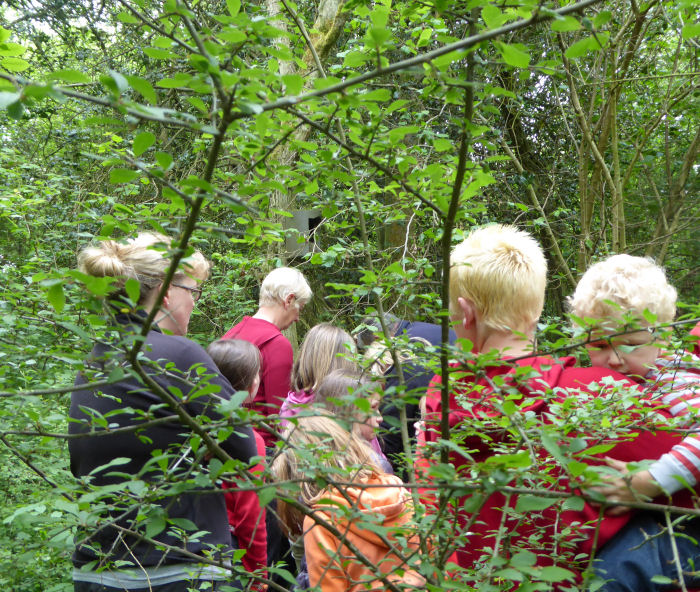
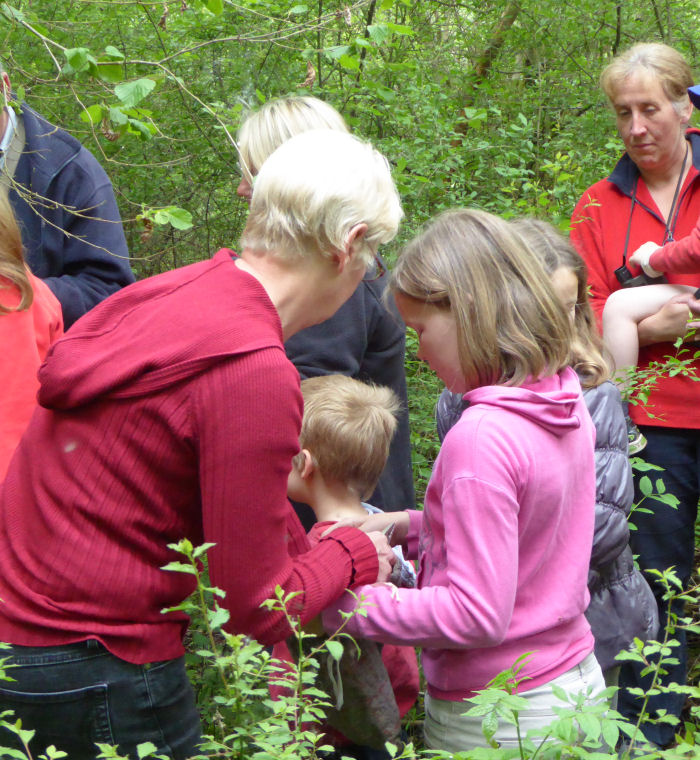

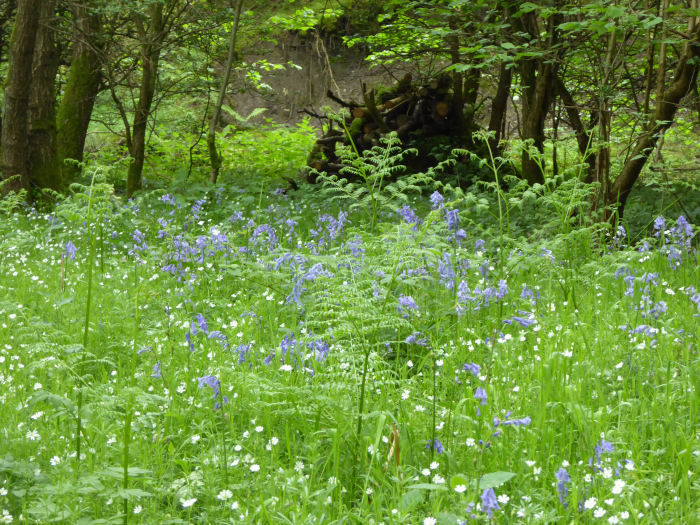

.JPG)







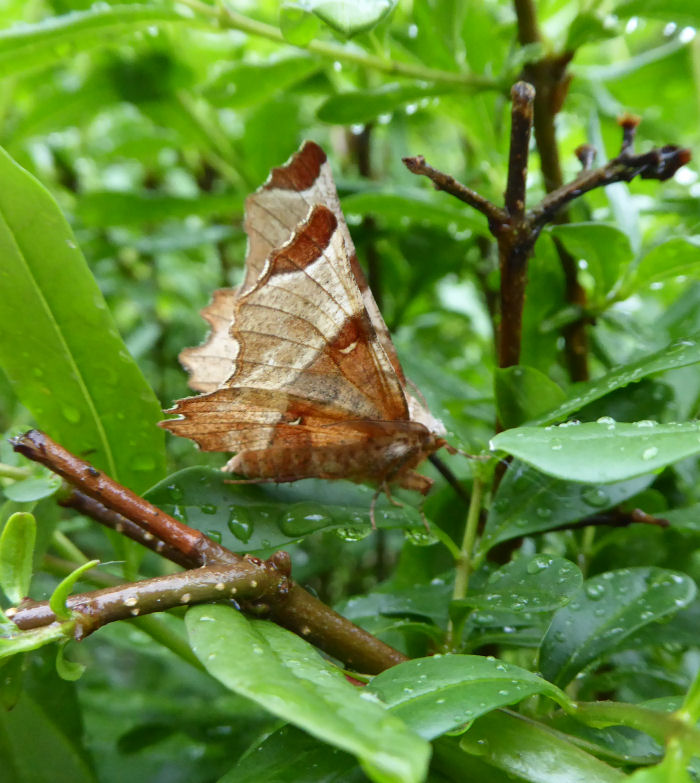
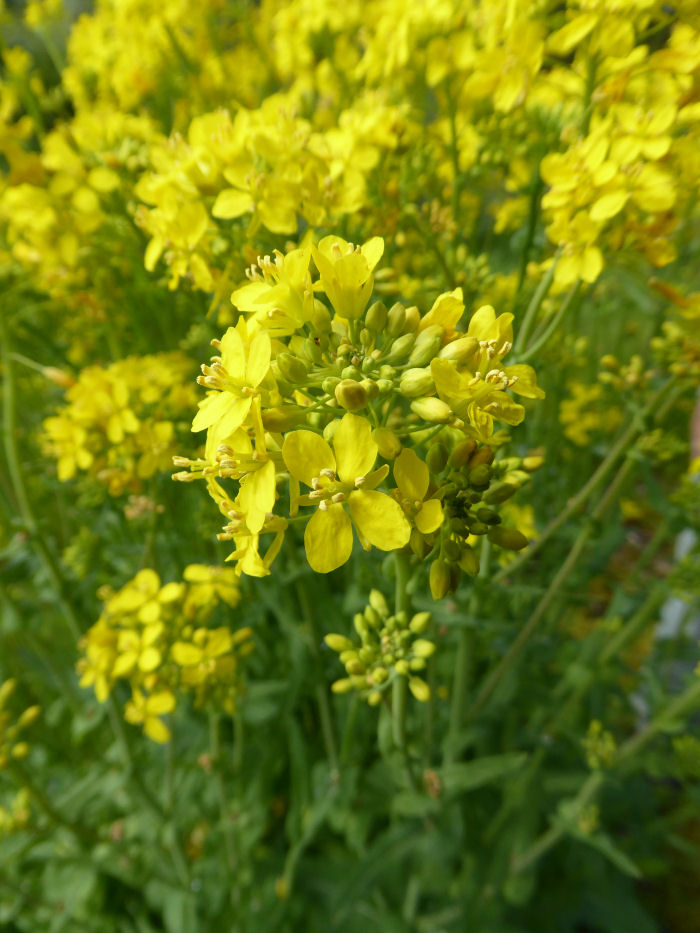



.JPG)
.JPG)
.JPG)


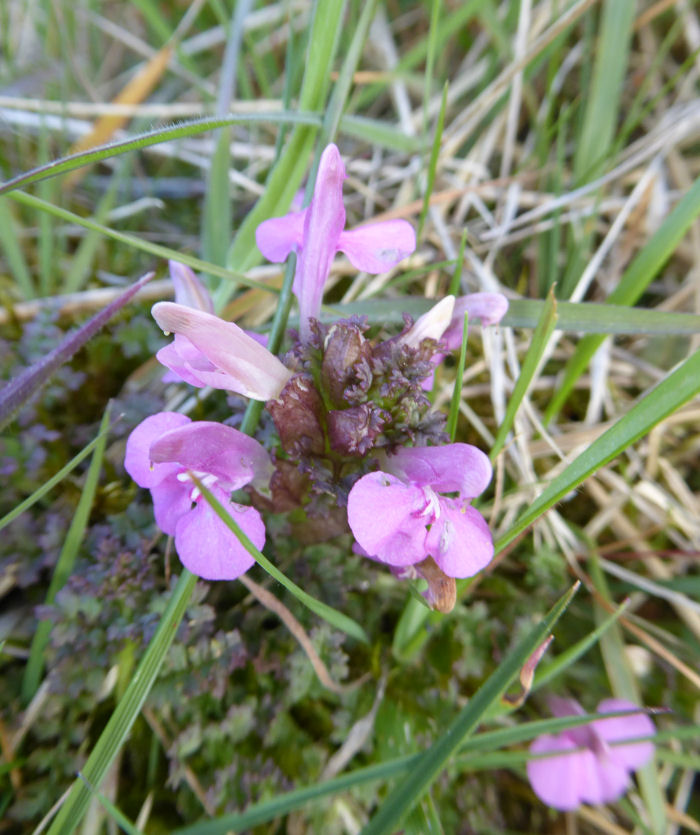
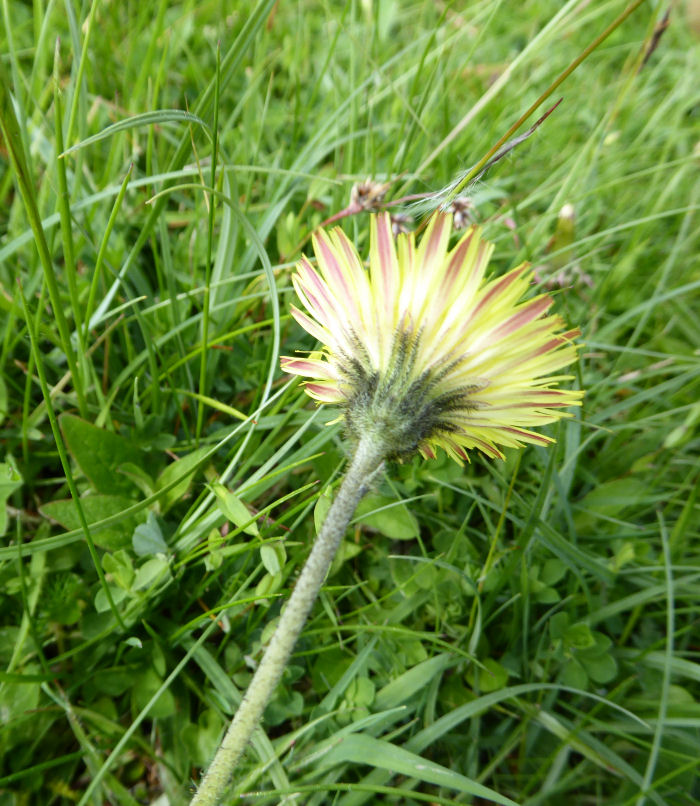
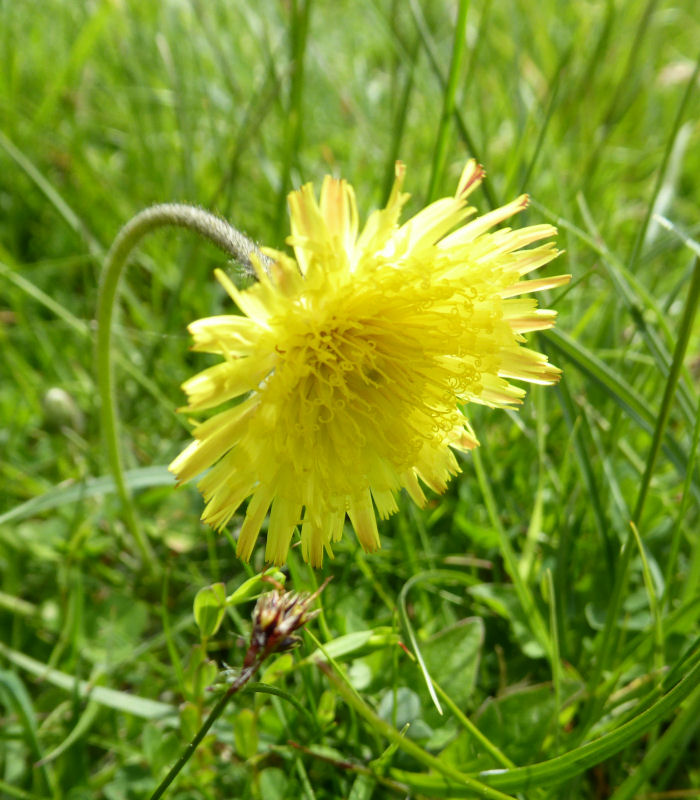
.JPG)
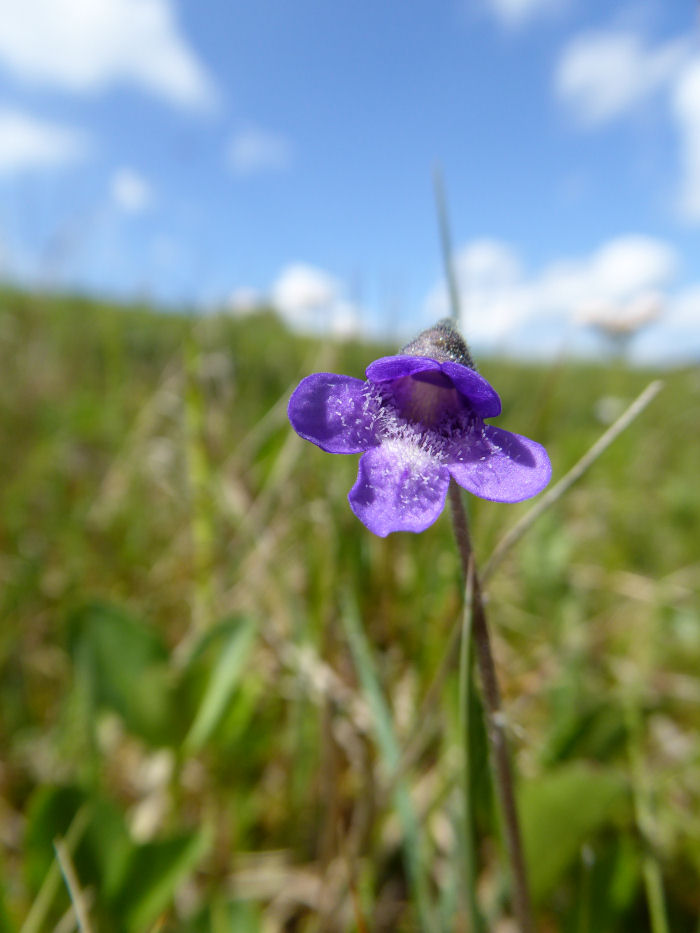








.JPG)
.JPG)




.JPG)
.JPG)
.JPG)









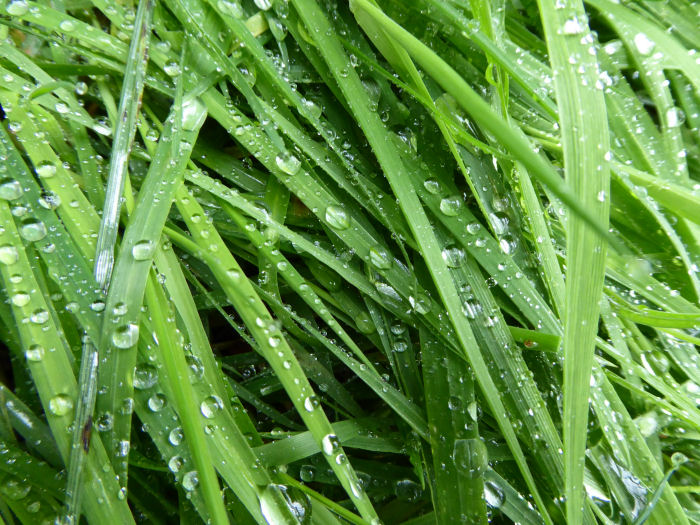






.JPG)





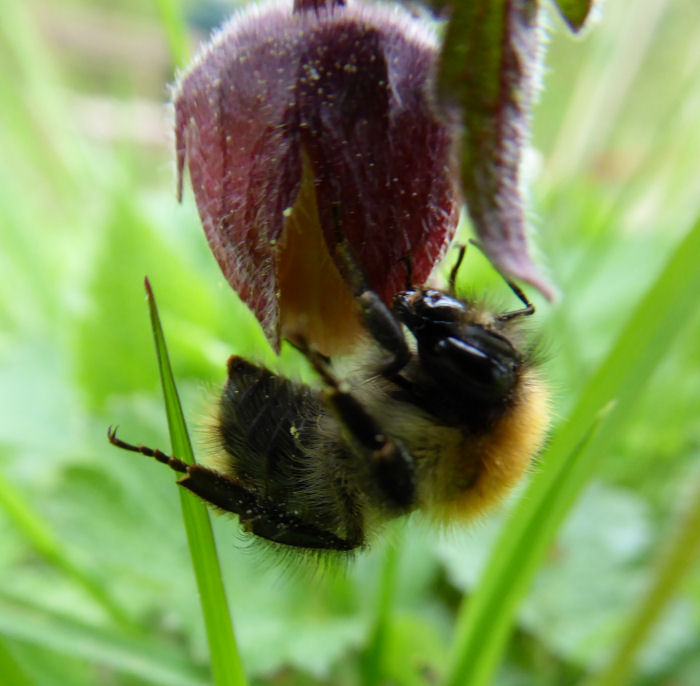
.JPG)











.JPG)


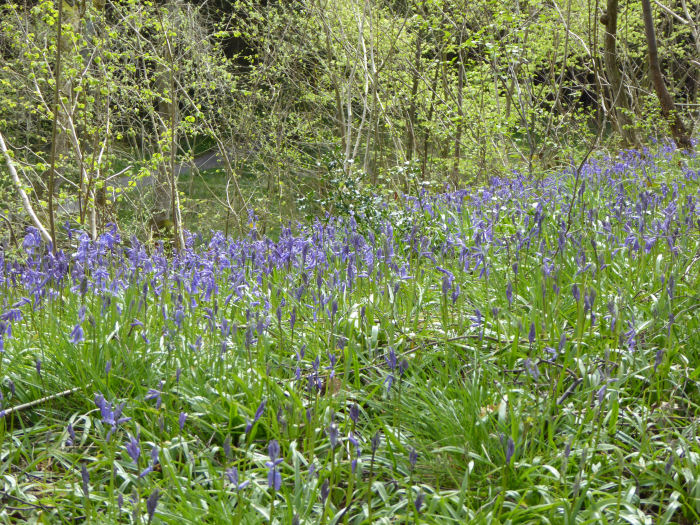


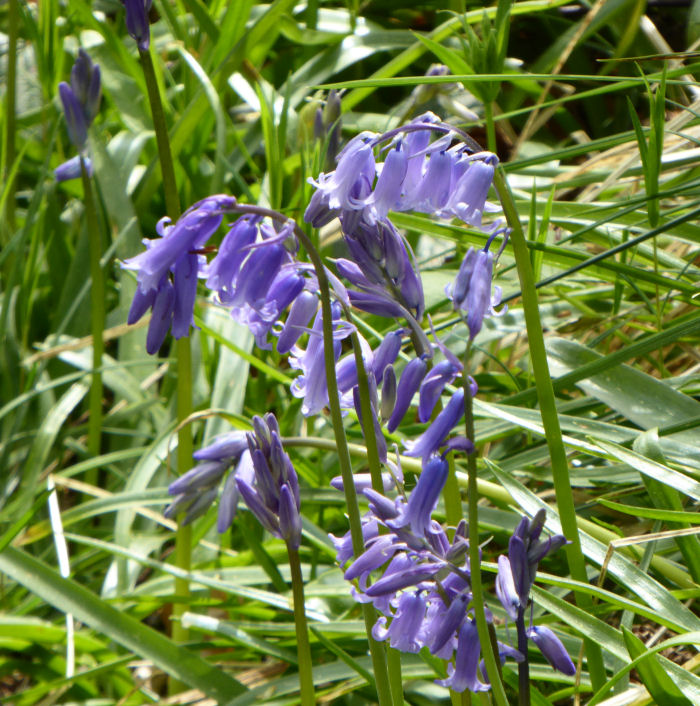


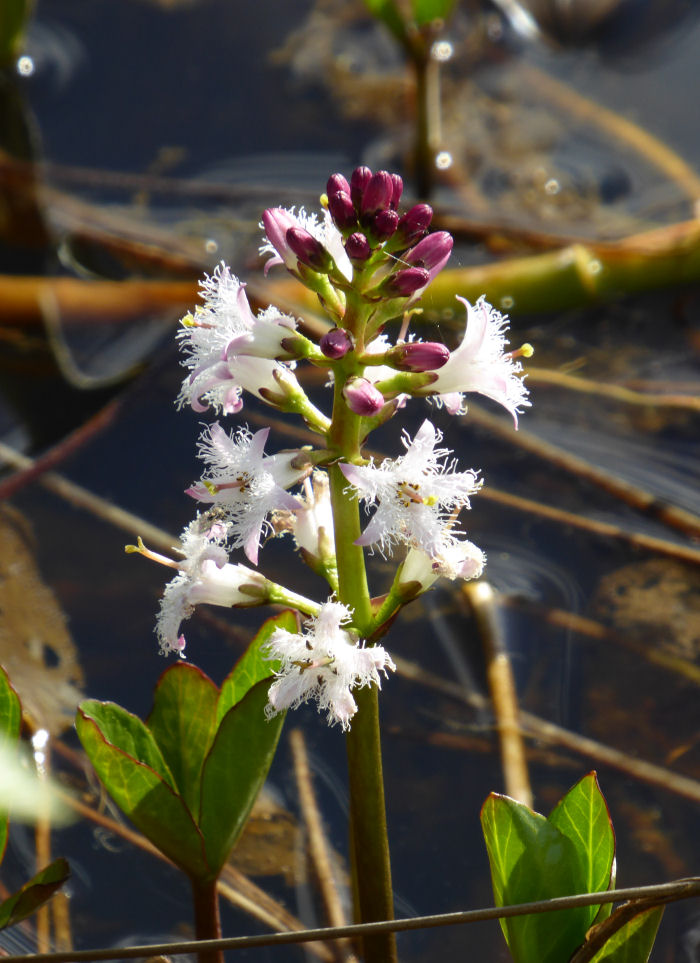





.JPG)
